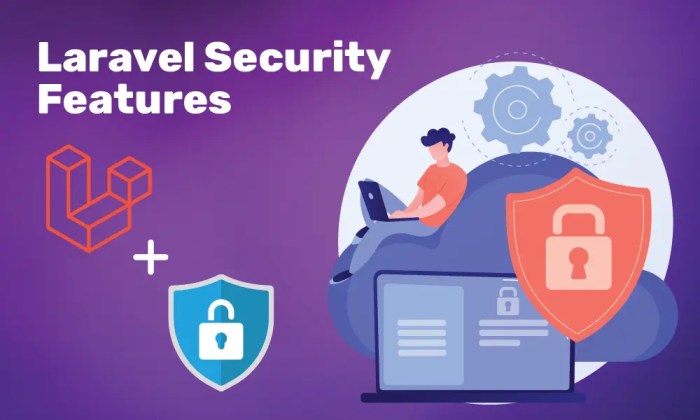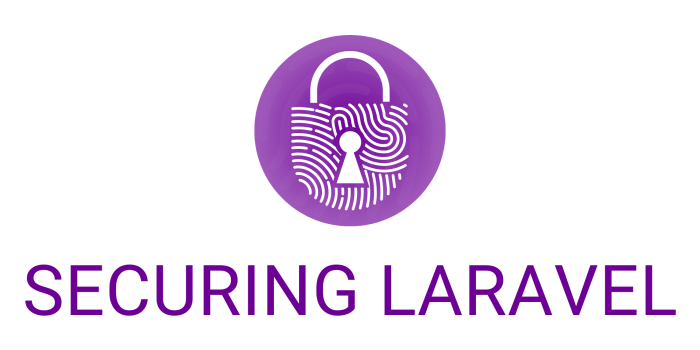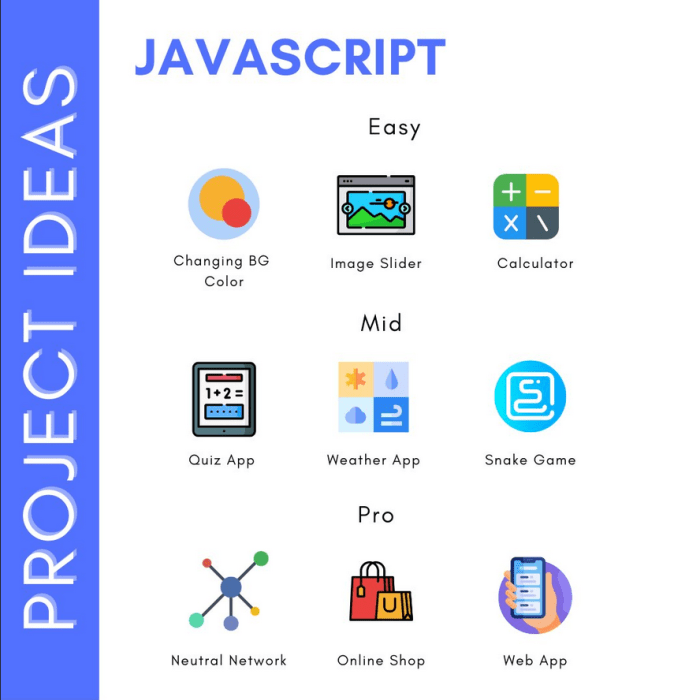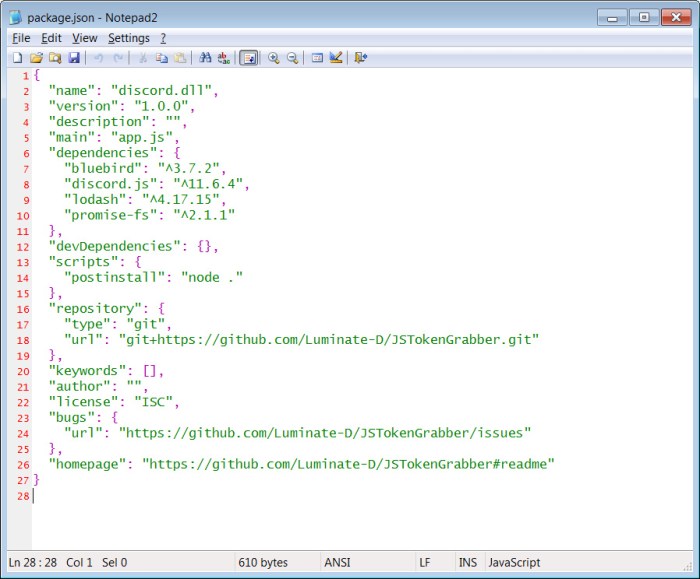Critical Laravel vulnerability: That phrase alone sends shivers down the spine of any developer. Imagine the chaos: a perfectly crafted application, suddenly exposed, its data vulnerable, its reputation shattered. This isn’t some theoretical threat; it’s a real-world danger that can cripple businesses and compromise sensitive information. We’re diving deep into the heart of these vulnerabilities, exploring their causes, consequences, and—most importantly—how to prevent them. Prepare for a journey into the dark side of Laravel security.
From understanding the severity levels and impact of different exploits to mastering the art of secure coding practices, we’ll cover everything you need to know to protect your Laravel applications. We’ll dissect real-world case studies, showing you exactly what can go wrong and how to avoid those pitfalls. This isn’t just a technical deep dive; it’s a survival guide for the modern Laravel developer.
Severity and Impact of Critical Laravel Vulnerabilities
Laravel, a popular PHP framework, powers countless websites and applications. However, critical vulnerabilities can have devastating consequences, potentially leading to data breaches, financial losses, and reputational damage. Understanding the severity and impact of these vulnerabilities is crucial for developers and system administrators to implement effective security measures.
The potential consequences of a critical Laravel vulnerability being exploited are significant and far-reaching. Successful exploitation can grant attackers complete control over the affected application, allowing them to manipulate data, steal sensitive information, deface websites, or even use the compromised system as a launchpad for further attacks. The severity hinges on the specific vulnerability and the data handled by the application. A vulnerability in an e-commerce platform, for instance, could lead to the theft of customer credit card details and personal information, resulting in substantial financial and legal repercussions.
Attack Vectors Exploiting Critical Laravel Vulnerabilities
Attackers can exploit critical Laravel vulnerabilities through various vectors. These often involve exploiting weaknesses in the framework’s core components, poorly implemented authentication mechanisms, or vulnerabilities in third-party packages integrated into the application. Common attack vectors include SQL injection, cross-site scripting (XSS), remote code execution (RCE), and cross-site request forgery (CSRF). SQL injection, for example, allows attackers to inject malicious SQL code into database queries, potentially gaining unauthorized access to sensitive data or modifying database entries. RCE allows an attacker to execute arbitrary code on the server, granting them complete control.
Real-World Scenarios of Critical Laravel Vulnerabilities
While specific details of critical Laravel vulnerabilities are often kept confidential for security reasons, we can examine real-world examples of similar vulnerabilities in other frameworks to understand the potential impact. For instance, a critical vulnerability in a popular content management system (CMS) could lead to the compromise of thousands of websites, exposing sensitive user data and potentially causing significant reputational damage to the organizations involved. Another example could be a vulnerability in a financial application that allows attackers to manipulate transaction data, leading to financial losses for the institution and its customers. The impact is magnified when the vulnerability remains unpatched for an extended period, allowing attackers ample time to exploit it.
Severity Levels of Laravel Vulnerabilities
The following table categorizes the severity levels of Laravel vulnerabilities, illustrating the range of potential impact. Note that the CVE IDs are illustrative and not necessarily real-world examples.
| CVE ID | Severity | Description | Impact |
|---|---|---|---|
| CVE-20XX-XXXX | Critical | Remote Code Execution (RCE) vulnerability in the core framework. | Complete server compromise, data theft, system disruption. |
| CVE-20XX-YYYY | High | SQL Injection vulnerability allowing unauthorized data access. | Data breach, unauthorized data modification, potential financial loss. |
| CVE-20XX-ZZZZ | Medium | Cross-Site Scripting (XSS) vulnerability affecting user accounts. | Session hijacking, potential phishing attacks, data manipulation. |
| CVE-20XX-AAAA | Low | Minor information disclosure vulnerability. | Limited impact, potential for reconnaissance attacks. |
Common Causes of Critical Laravel Vulnerabilities
So, you’ve built a slick Laravel app, right? But even the most elegant code can harbor sneaky security flaws. Let’s dive into the common pitfalls that can turn your masterpiece into a digital disaster, focusing on the coding practices and dependencies that often lead to critical vulnerabilities.
Ignoring fundamental security principles during development is the root cause of many Laravel vulnerabilities. This isn’t about blaming developers; it’s about understanding the typical missteps and how to avoid them. Failing to implement robust input validation, neglecting proper authentication and authorization mechanisms, and overlooking the importance of keeping dependencies up-to-date are all major contributors to critical vulnerabilities. Let’s unpack these issues.
Outdated Packages and Dependencies
Outdated packages and dependencies are a significant source of vulnerabilities. Think of it like this: you wouldn’t drive a car with worn-out tires and faulty brakes, right? Similarly, relying on outdated Laravel packages exposes your application to known security exploits that have already been patched in newer versions. These outdated components often contain vulnerabilities that malicious actors can exploit to gain unauthorized access or cause significant damage. For example, an outdated authentication package might contain a flaw that allows attackers to bypass login mechanisms, potentially leading to complete system compromise. Regularly updating your packages through Composer is crucial. Failing to do so leaves your application vulnerable to attacks targeting known vulnerabilities in those outdated packages. The consequences can range from data breaches to complete application takeover.
Insecure Coding Practices
Insecure coding practices are another major culprit. Let’s look at some examples. SQL injection vulnerabilities, for instance, arise when user-supplied data is directly incorporated into SQL queries without proper sanitization. This allows attackers to inject malicious SQL code, potentially manipulating or extracting sensitive data from your database. Imagine an attacker injecting code to delete your entire user database – a nightmare scenario. Another common issue is cross-site scripting (XSS) vulnerabilities, which occur when an application fails to properly sanitize user-provided input before displaying it on a web page. Attackers can exploit this to inject malicious JavaScript code, potentially stealing user cookies or redirecting users to phishing websites. This could result in a complete compromise of user accounts and sensitive data. Always validate and sanitize user inputs before using them in your application. This seemingly small step can prevent catastrophic consequences.
Insufficient Input Validation
Insufficient input validation is a frequent cause of vulnerabilities. Failing to thoroughly validate user inputs before processing them can lead to a range of problems, from unexpected application behavior to serious security breaches. Imagine a form that allows users to upload files. Without proper validation, an attacker could upload a malicious file, potentially executing arbitrary code on your server. This could lead to a complete compromise of your system, granting attackers full control. Robust input validation should be implemented to ensure that all user inputs conform to expected formats and data types. This prevents many common vulnerabilities and significantly enhances the security of your application.
Lack of Proper Authentication and Authorization, Critical laravel vulnerability
Weak or improperly implemented authentication and authorization mechanisms are a common vulnerability. If your application doesn’t properly verify user identities and restrict access to sensitive resources, attackers can easily gain unauthorized access. For example, a flaw in your authentication system could allow attackers to bypass login requirements, giving them full access to your application’s functionalities and data. Similarly, inadequate authorization controls could allow unauthorized users to access or modify sensitive data they shouldn’t have access to. This could lead to data breaches, financial losses, or reputational damage. Implementing strong authentication and authorization mechanisms is crucial to protecting your application and user data.
Identifying and Mitigating Critical Laravel Vulnerabilities
So, you’ve built a fantastic Laravel application, but lurking in the shadows might be critical vulnerabilities. Ignoring them is a recipe for disaster – think data breaches, financial losses, and a serious dent in your reputation. Let’s dive into how to proactively identify and neutralize these threats before they cause havoc.
Identifying Potential Critical Vulnerabilities
Pinpointing critical vulnerabilities requires a multi-pronged approach. It’s not just about running a single security scan; it’s about a comprehensive examination of your codebase and its interactions with the outside world. This involves a thorough review of your application’s architecture, code quality, and dependencies. A keen eye for potential injection flaws (SQL, XSS, command injection), authentication weaknesses, and authorization loopholes is crucial. Remember, even small oversights can have significant consequences.
Security Testing Tools and Techniques
Several powerful tools and techniques can significantly aid in identifying vulnerabilities. Static analysis tools, such as SonarQube or Psalm, examine your code without actually running it, flagging potential issues based on coding best practices and known vulnerability patterns. Dynamic analysis tools, like OWASP ZAP or Burp Suite, actively probe your running application, simulating real-world attacks to uncover vulnerabilities in real-time. Penetration testing, performed by security experts, offers a more comprehensive assessment, mimicking sophisticated attacks to identify weaknesses that automated tools might miss. Regular security audits, involving manual code reviews and security assessments, are also vital. They provide a human element to the process, catching nuances that automated tools might overlook.
Patching and Mitigating a Discovered Critical Vulnerability
Discovering a critical vulnerability is serious business, but swift action can minimize the damage. First, thoroughly understand the nature and scope of the vulnerability. Isolate the affected code segment and prioritize patching it immediately. This usually involves fixing the underlying code flaw, potentially updating vulnerable libraries or frameworks, and rigorously testing the fix to ensure it doesn’t introduce new problems. If a quick fix isn’t immediately available, consider implementing temporary workarounds, such as input sanitization or access controls, to mitigate the risk while a permanent solution is developed. Finally, inform affected users about the vulnerability and the steps taken to address it, maintaining transparency and building trust. Remember to thoroughly document the entire process, including the vulnerability’s details, the patch applied, and the testing performed.
Designing a Secure Development Lifecycle (SDLC)
Preventing vulnerabilities from appearing in the first place is far more effective than fixing them later. A secure SDLC emphasizes security at every stage of development, from initial design to deployment and maintenance. This involves integrating security practices into each phase, such as conducting regular security code reviews, utilizing static and dynamic analysis tools throughout the development process, and performing penetration testing before release. Employing secure coding practices, adhering to coding standards, and using parameterized queries to prevent SQL injection are also critical elements. Regular security training for developers is essential to foster a security-conscious mindset and improve their ability to identify and prevent vulnerabilities. Continuous monitoring and logging post-deployment are vital for early detection of any emerging threats. For instance, a well-defined SDLC incorporating these principles could prevent a situation like the infamous Heartbleed bug, which stemmed from insufficient validation of input data. Implementing these measures minimizes the likelihood of critical vulnerabilities and reduces the potential impact if they do occur.
Vulnerability Disclosure and Response
Discovering a critical vulnerability in a widely used framework like Laravel demands a responsible and timely response. Ignoring such a discovery is not an option; it puts countless applications and users at risk. The process of disclosure, therefore, must be carefully managed to ensure both security and the integrity of the affected systems.
Responsible disclosure involves a delicate balance between protecting users and giving developers time to patch vulnerabilities. It’s about proactive communication and collaboration, not just about shouting from the rooftops. A swift and well-coordinated response minimizes the damage and strengthens the overall security posture of the Laravel ecosystem.
Responsible Disclosure Process
The responsible disclosure of a critical Laravel vulnerability typically follows a structured approach. First, the vulnerability should be thoroughly verified to confirm its existence and potential impact. Next, attempt to reproduce the vulnerability in a controlled environment. This ensures you’re not reporting a false positive. Then, privately contact the Laravel security team or the relevant maintainers of the affected package, providing sufficient details to reproduce the issue. This private disclosure allows the developers time to develop and release a patch without widespread exploitation. Only after a patch is released should public disclosure be considered. Public disclosure should only occur if the vendor is unresponsive or fails to address the vulnerability in a timely manner.
Importance of Timely Patching and Updates
Timely patching is paramount. Once a critical vulnerability is identified and a patch is released, it’s crucial for developers to update their applications immediately. Delaying updates increases the risk of exploitation. Imagine a scenario where a critical SQL injection vulnerability exists in an e-commerce platform. A delayed patch could lead to database compromise, exposing sensitive customer data like credit card information and personal details, resulting in significant financial and reputational damage for the business. This underscores the urgency of implementing updates as soon as they become available.
Communicating Vulnerability Information to Affected Users
Effective communication is key. When a vulnerability affects your application, inform your users promptly and clearly. Explain the nature of the vulnerability, its potential impact, and the steps they need to take to protect themselves. Use clear and concise language, avoiding technical jargon where possible. Consider providing a timeline for the release of a patch and any interim mitigation strategies users can implement. Transparency builds trust and helps to mitigate the damage caused by the vulnerability. A well-crafted email notification, coupled with updates on your website or application, can be very effective.
Creating a Detailed Vulnerability Report
A well-structured vulnerability report is crucial for efficient remediation. The report should include:
- Vulnerability Summary: A concise description of the vulnerability, including its type (e.g., SQL injection, cross-site scripting).
- Affected Versions: Specify the exact Laravel versions affected by the vulnerability.
- Technical Details: Provide detailed steps to reproduce the vulnerability, including code snippets, HTTP requests, and any relevant environment configurations. This is essential for developers to understand and fix the issue.
- Impact Assessment: Describe the potential consequences of exploiting the vulnerability, such as data breaches, denial-of-service attacks, or remote code execution.
- Remediation Steps: Artikel the steps to fix the vulnerability, including specific code changes or configuration adjustments. If possible, provide a working example of the corrected code.
- Proof of Concept (PoC): Include a minimal, self-contained example demonstrating the vulnerability. This should be provided responsibly, minimizing the risk of misuse.
A detailed report ensures that developers have all the information they need to quickly and effectively address the vulnerability. The level of detail provided should be appropriate to the severity of the vulnerability.
Preventing Future Critical Laravel Vulnerabilities

Source: disciplineinfotech.com
Proactive security measures are paramount in the world of Laravel development. Ignoring them is like leaving your front door unlocked – an invitation for trouble. Building secure applications from the ground up, rather than patching vulnerabilities after they’re discovered, is far more efficient and cost-effective in the long run. Let’s explore some key strategies to fortify your Laravel applications and prevent future critical vulnerabilities.
Implementing robust security practices isn’t just about following a checklist; it’s about cultivating a security-conscious mindset throughout the entire development lifecycle. This involves developers, project managers, and even the clients themselves. A collaborative approach ensures that security is not an afterthought, but a core component of every project.
Security Best Practices Checklist for Laravel Developers
A comprehensive checklist serves as a practical guide for developers to ensure the security of their Laravel applications. Consistent adherence to these practices minimizes the risk of vulnerabilities and strengthens the overall security posture.
- Keep Laravel and its dependencies up-to-date: Regularly update Laravel itself and all its associated packages. Outdated components are prime targets for attackers.
- Use strong passwords and enforce password policies: Implement robust password requirements, including length, complexity, and regular changes. Consider using password hashing algorithms like bcrypt.
- Validate all user inputs: Never trust user-supplied data. Always sanitize and validate all inputs before processing them to prevent injection attacks (SQL injection, XSS, etc.).
- Protect against Cross-Site Request Forgery (CSRF): Use Laravel’s built-in CSRF protection mechanism to prevent malicious websites from tricking users into performing unwanted actions.
- Employ proper authentication and authorization: Implement secure authentication mechanisms and fine-grained authorization to control access to resources based on user roles and permissions.
- Use HTTPS: Always use HTTPS to encrypt communication between the client and the server, protecting sensitive data in transit.
- Regularly back up your database: This is crucial for recovery in case of a security breach or other data loss incidents. Consider using version control for your codebase as well.
- Implement input sanitization and output encoding: Sanitize user inputs to remove malicious code and encode outputs to prevent XSS attacks.
- Follow the principle of least privilege: Grant users only the necessary permissions to perform their tasks. Avoid granting excessive privileges that could be exploited.
- Use parameterized queries or prepared statements: Prevent SQL injection by using parameterized queries or prepared statements instead of directly embedding user input into SQL queries.
Regular Security Audits and Penetration Testing
Regular security audits and penetration testing are crucial for identifying vulnerabilities that might have been missed during development. These proactive measures provide a comprehensive assessment of your application’s security posture.
Security audits involve systematic reviews of your codebase, configuration files, and security practices to identify potential weaknesses. Penetration testing simulates real-world attacks to expose vulnerabilities and assess the effectiveness of your security controls. Think of it as a security checkup for your application. Regular, scheduled audits and penetration tests are like regular visits to the doctor – they catch problems early and prevent them from becoming serious issues.
Automated Security Tools for Vulnerability Detection
Leveraging automated security tools significantly streamlines the vulnerability detection process. These tools can automatically scan your code for common vulnerabilities and provide detailed reports. This automated approach frees up developers to focus on other critical tasks.
Many tools are available, both commercial and open-source, that can analyze your code for potential vulnerabilities. Some tools integrate directly into your development workflow, providing real-time feedback during development. Others perform more comprehensive scans on a regular schedule. Using these tools significantly improves efficiency and reduces the likelihood of human error.
Resources and Training Materials for Improving Laravel Application Security
Continuous learning is essential for staying ahead of evolving security threats. Numerous resources and training materials are available to enhance your knowledge and skills in Laravel application security.
- Official Laravel Documentation: The official Laravel documentation provides valuable insights into security best practices and features.
- Online Courses and Tutorials: Numerous online platforms offer courses and tutorials on Laravel security, covering various aspects of secure development.
- Security Blogs and Articles: Stay updated with the latest security trends and vulnerabilities by following security blogs and articles written by experts.
- Security Conferences and Workshops: Attending security conferences and workshops provides opportunities to learn from leading experts and network with other professionals.
Case Studies of Critical Laravel Vulnerabilities: Critical Laravel Vulnerability

Source: freecodecamp.org
Real-world examples of critical Laravel vulnerabilities highlight the importance of proactive security measures. These cases demonstrate the diverse ways vulnerabilities can manifest and the significant impact they can have on applications and their users. Understanding these past incidents provides valuable insights for developers to strengthen their security practices.
Case Study 1: Remote Code Execution Vulnerability in a Popular E-commerce Platform
This case involved a large e-commerce platform built using Laravel 5.5. A critical vulnerability allowed attackers to execute arbitrary code on the server remotely. This was due to insufficient input sanitization in a specific controller function, which allowed attackers to inject malicious code through crafted URL parameters.
- Vulnerability: Remote Code Execution (RCE) via crafted URL parameters. Affected Laravel version: 5.5.
- Impact: Complete compromise of the e-commerce server, potentially leading to data breaches, financial losses, and reputational damage. Attackers could steal customer data, modify product prices, or even take down the entire website.
- Remediation: The vulnerability was patched by implementing robust input validation and sanitization across all controller functions. The platform also underwent a comprehensive security audit to identify and address other potential vulnerabilities. An updated version of Laravel was not immediately available, so a custom patch was implemented.
Case Study 2: SQL Injection Vulnerability in a Social Media Application
A social media application utilizing Laravel 5.8 suffered from a critical SQL injection vulnerability. This vulnerability stemmed from a lack of parameterized queries in a user profile update function. Attackers could inject malicious SQL code through the username field, potentially gaining access to the entire database.
- Vulnerability: SQL Injection vulnerability in the user profile update function. Affected Laravel version: 5.8.
- Impact: Complete database compromise, potentially exposing sensitive user data such as passwords, personal information, and private messages. This could lead to identity theft, financial fraud, and reputational damage for the application.
- Remediation: The vulnerability was addressed by immediately switching to parameterized queries or prepared statements for all database interactions. The application also implemented an input validation layer to prevent malicious SQL code from being injected. A database backup and restore procedure was also implemented.
Case Study 3: Cross-Site Request Forgery (CSRF) Vulnerability in a Banking Application
A banking application built with Laravel 6.0 contained a critical CSRF vulnerability. This allowed attackers to perform unauthorized actions on behalf of authenticated users, such as transferring funds or changing account details. The vulnerability was present in a form that lacked CSRF protection tokens.
- Vulnerability: Cross-Site Request Forgery (CSRF) vulnerability in a funds transfer form. Affected Laravel version: 6.0.
- Impact: Unauthorized access to user accounts, potentially leading to significant financial losses for users and reputational damage for the bank. Attackers could transfer funds to their own accounts or perform other fraudulent activities.
- Remediation: The vulnerability was fixed by adding CSRF protection tokens to all vulnerable forms using Laravel’s built-in CSRF protection mechanisms. The development team also implemented additional security measures, such as multi-factor authentication, to further enhance security.
Closure

Source: picperf.io
So, the next time you’re building a Laravel application, remember this: security isn’t an afterthought; it’s the foundation. By understanding the common causes of critical vulnerabilities, employing robust security testing methods, and following best practices, you can significantly reduce your risk. Staying updated, regularly auditing your code, and embracing a proactive security mindset are not just good ideas—they’re essential for survival in the ever-evolving landscape of web application security. The stakes are high, but with the right knowledge and vigilance, you can build secure and resilient Laravel applications that stand the test of time (and the test of malicious actors).


